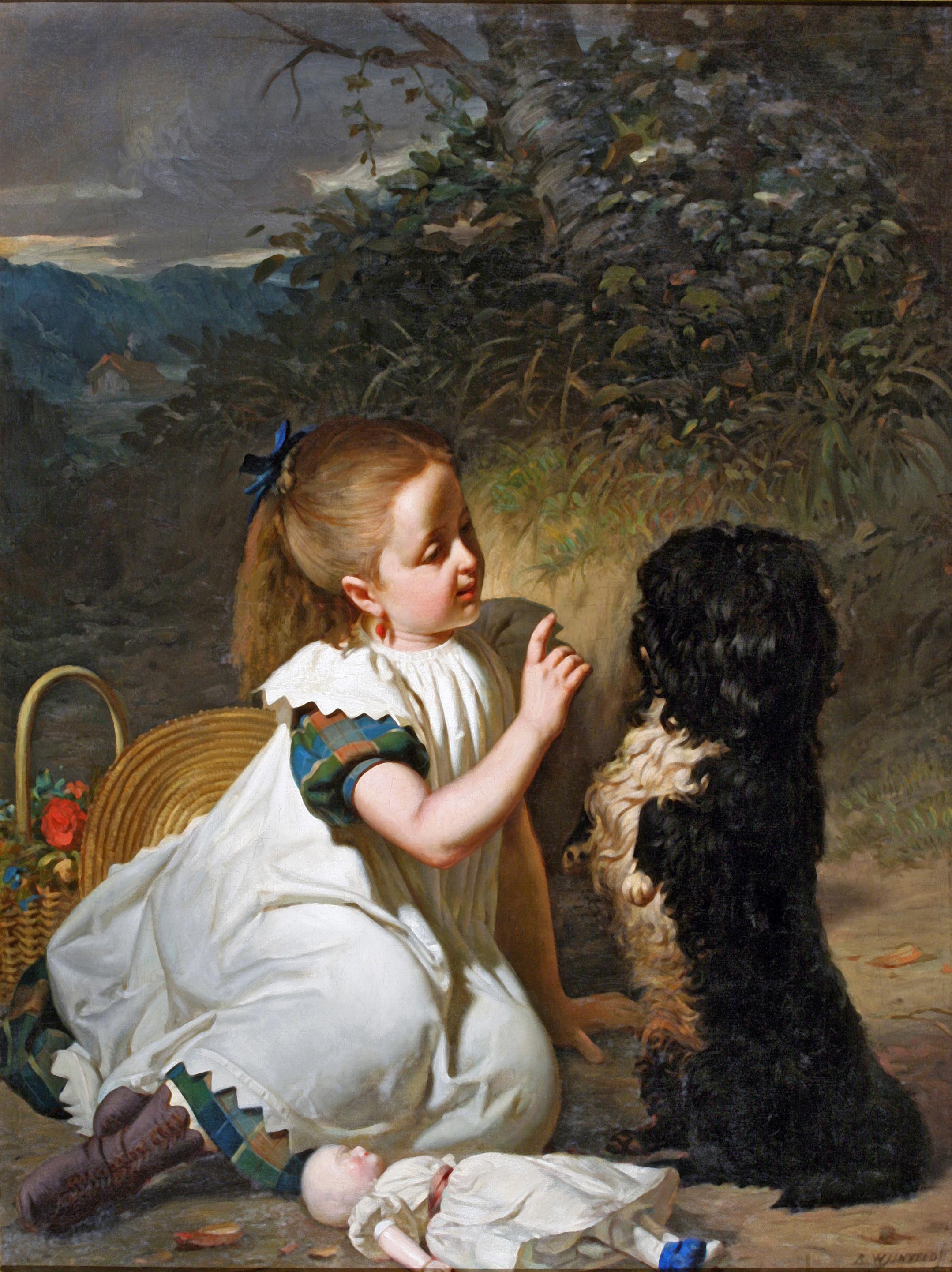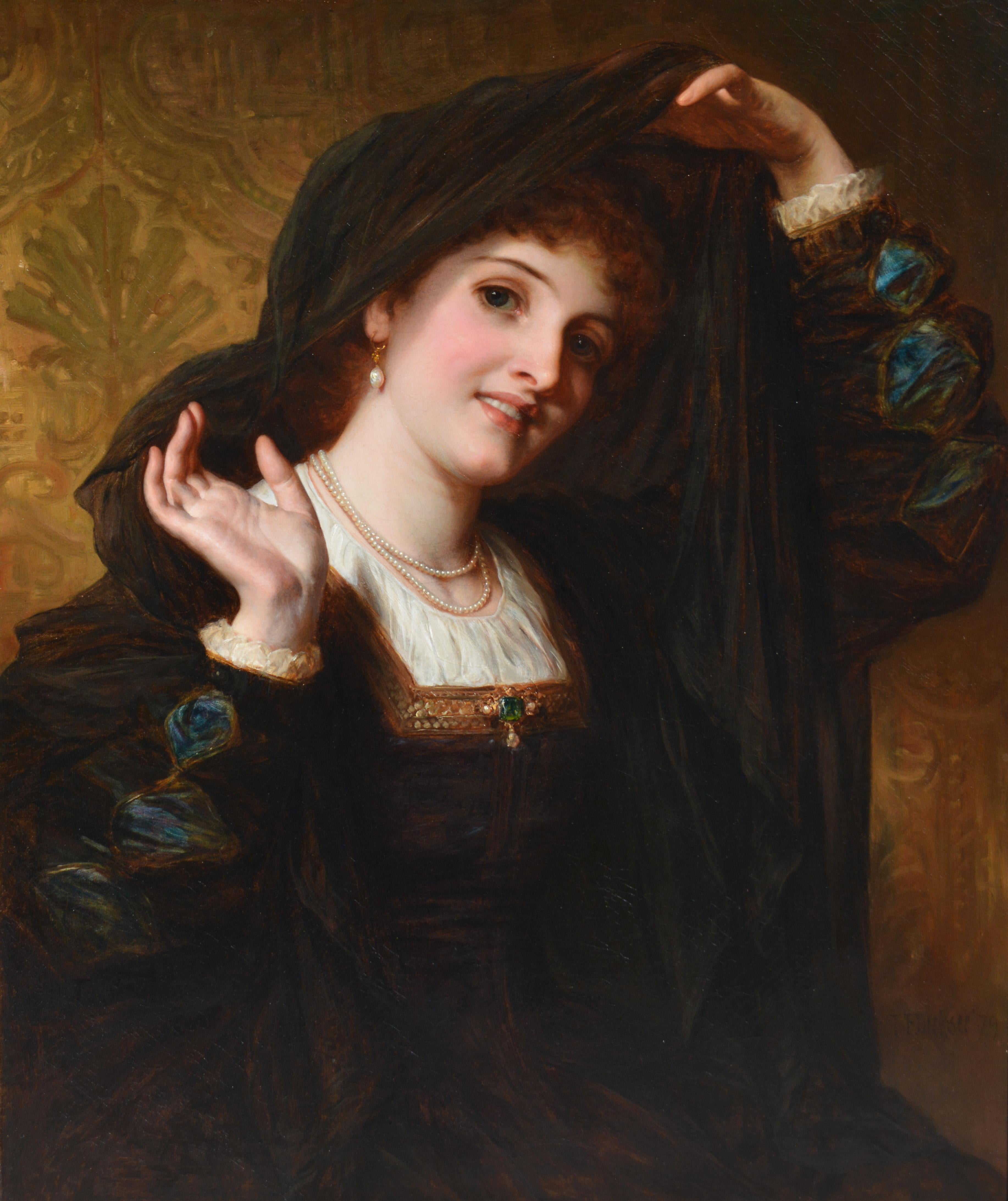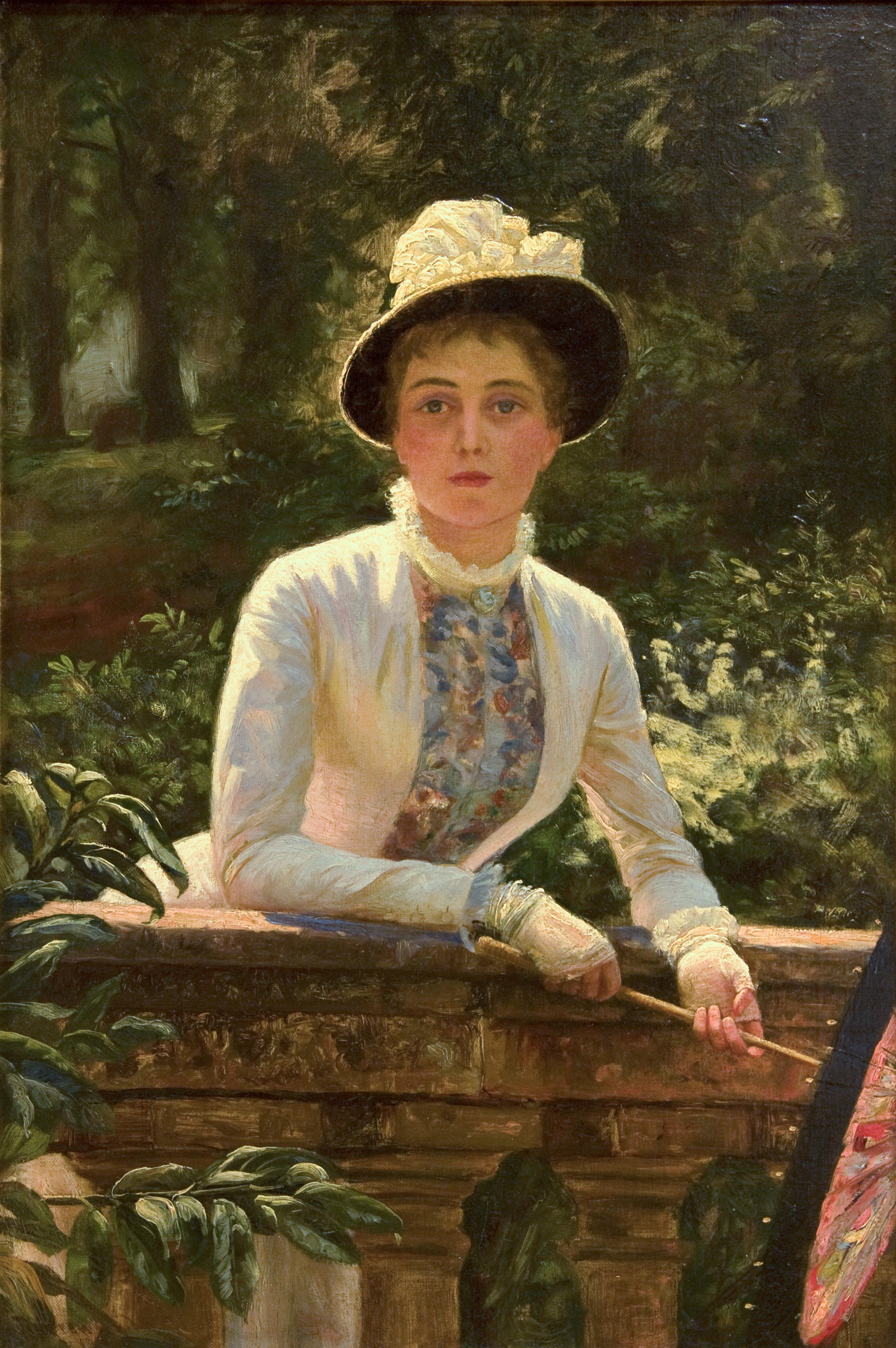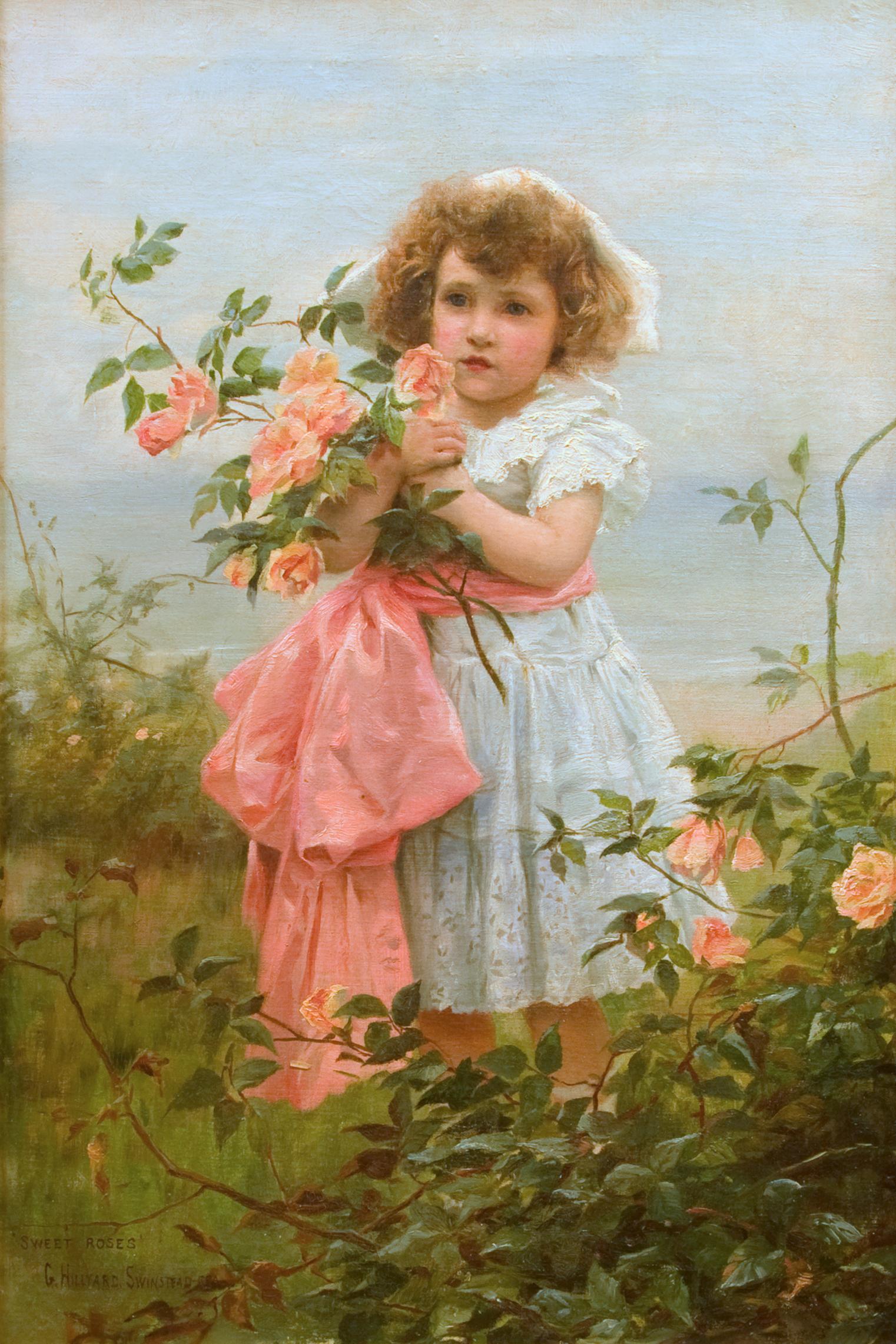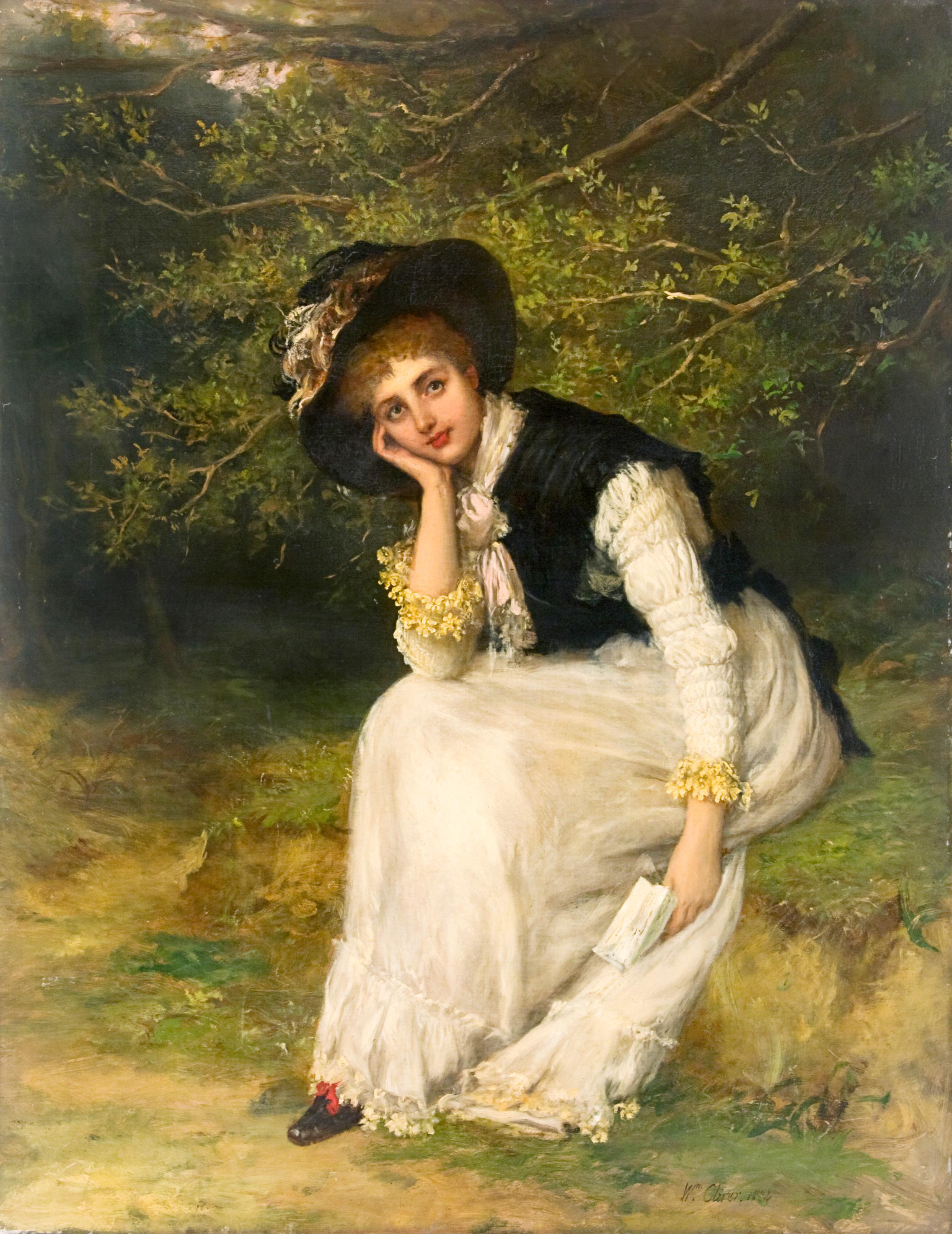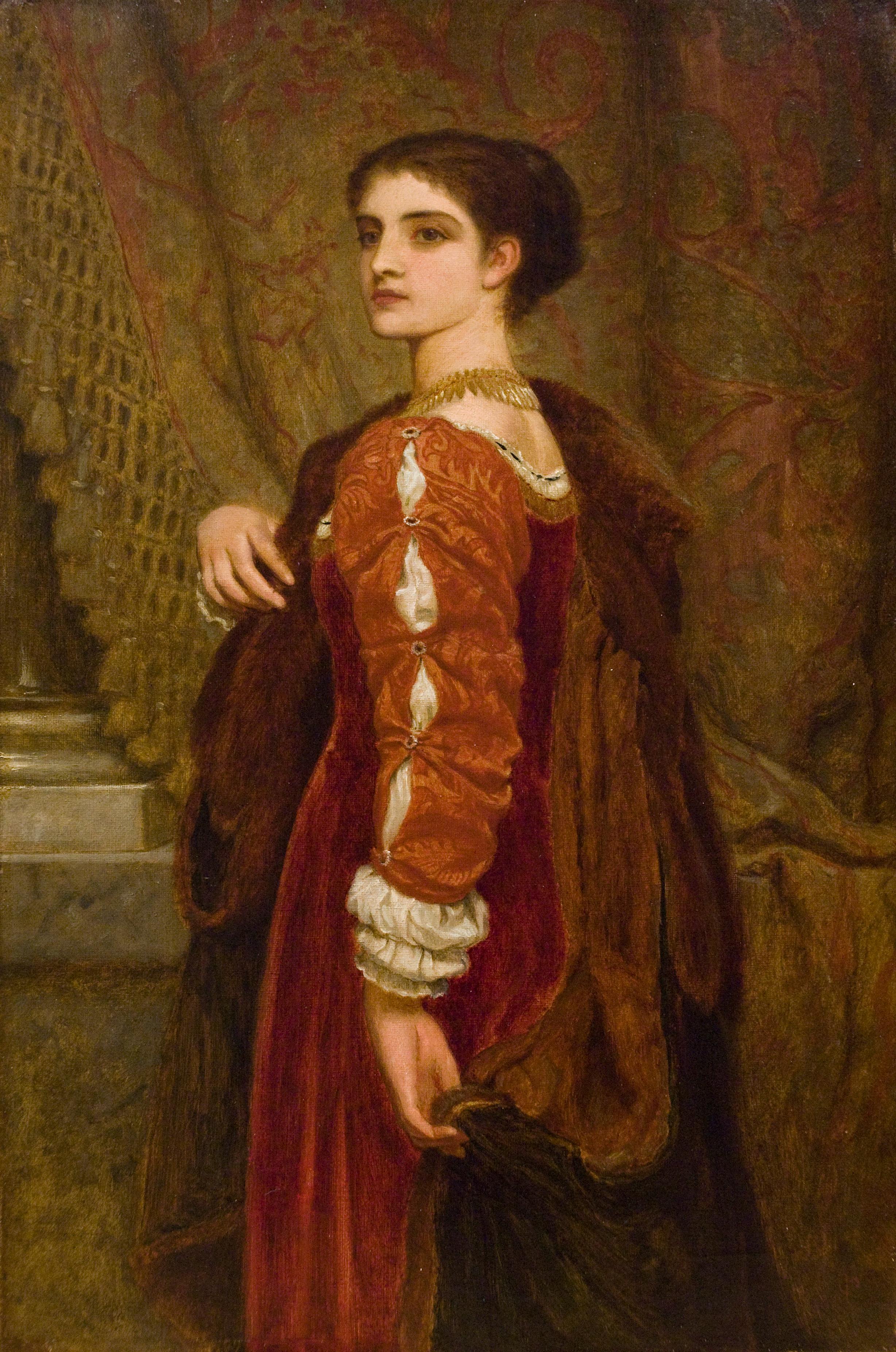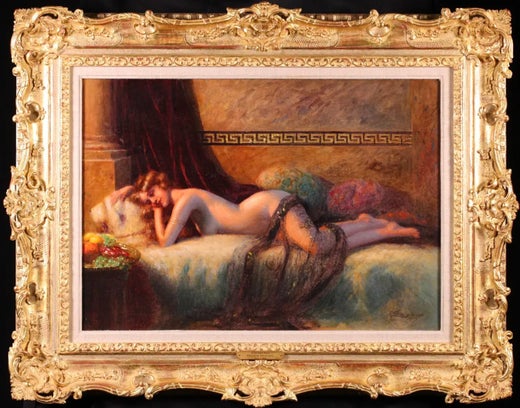Delphin EnjolrasIn the Boudoir
About the Item
- Creator:Delphin Enjolras (1857-1945, French)
- Dimensions:Height: 37 in (93.98 cm)Width: 30 in (76.2 cm)Depth: 1 in (2.54 cm)
- Medium:
- Movement & Style:
- Period:
- Condition:
- Gallery Location:Missouri, MO
- Reference Number:1stDibs: LU74735400592
Delphin Enjolras
Delphin Enjolras was born in France in 1857. He began his studies at the École de Dessin de la Ville de Paris, focusing primarily on watercolors. Enjolras soon moved on to study at the École des Beaux-Arts, learning from masters including the Academic great Jean-Léon Gérôme. Landscapes were his primary focus in his early career, though it became clear that painting women was where his true talent showed the brightest. Enjolras became a celebrated painter of nudes, and his later work became imbued with a stunning sensuality. Beginning in 1890, he frequently exhibited at the Paris Salon, and he joined the Société des Artistes Français in 1901. Enjolras's works are highly exhibited throughout France, including significant collections of his work at the Musée du Puy and the Musée d’Avignon.
- ShippingRetrieving quote...Ships From: Missouri, MO
- Return PolicyA return for this item may be initiated within 2 days of delivery.
- Bean Picking, New Jersey, 1890By Frederick RondelLocated in Missouri, MOBean Picking, New Jersey, 1890 By. Frederick Rondel (1826-1892) Signed Lower Right Unframed: 21.5" x 35.5" Framed: 32" x 46" Frederick Rondel, born in Paris in 1826, came to America...Category
19th Century French School Landscape Paintings
MaterialsOil, Canvas
- Mid-day, Zuni VillageBy Frank Reed WhitesideLocated in Missouri, MOMid-day, Zuni Village, 1897 By. Frank Reed Whiteside (American, 1866-1929) Unframed: 20" x 30" Framed: 28" x 38" Frank Reed Whiteside, born in Philadelphia on 20 August 1867, became a student of Thomas Anshutz at the Pennsylvania Academy of the Fine Arts (1888-92). He already began exhibiting there during his student years (1887-98). In 1893, he enrolled in the Académie Julian in Paris where he received instruction from Jean-Paul Laurens and Benjamin Constant. After his French academic training, Whiteside taught art in Philadelphia high schools. He took frequent trips to the Southwest between 1890 and 1928 to live with and paint the Zuni Indians. Whiteside depicted ceremonial dances, Zuni buildings, and other genre scenes, usually in blinding afternoon sunlight. He carefully observed the effects of light on vibrant color, using a finely crafted impressionist technique. He was fond of broad areas of color, subtle combinations of hues, and simplified shapes and silhouettes. Whiteside continued to exhibit at the PAFA (1905-15), at the Art Institute of Chicago (1896-1916), at the Carnegie International (1905 and 1907) and at the Corcoran Gallery (1907). He was a member of Philadelphia art societies and beginning in 1909 had a summer studio in Ogunquit, Maine, where he took part in Hamilton Easter Field's discussion groups. Frank's wife, Clara Walker Whiteside, who published Touring New England in 1926, was active in the Ogunquit Art Association. Like Stanford White, Frank Reed Whiteside was the victim of murder, on 19 September 1929, but Whiteside's case remains unsolved. One night, the sixty-three year-old painter answered the doorbell. Two witnesses...Category
Late 19th Century Other Art Style Figurative Paintings
MaterialsOil, Canvas
- Afternoon, Madison SquareBy Paul CornoyerLocated in Missouri, MOPaul Cornoyer (American, 1864-1923) "Afternoon, Madison Square" (New York City) 1908 Oil on Canvas Signed/Titled Verso on Stretcher Bar Unframed: 22 x 27 inches Framed: 32.5 x 38 inches Exhibition Label Verso (Presumably Newhouse Galleries, St. Louis...Category
Early 1900s Tonalist Landscape Paintings
MaterialsOil, Canvas
- NudesLocated in Missouri, MONudes By. Salcia Bahnc (Polish, American, 1898-1976) Signed Lower Middle Unframed: 14 x 18 inches Framed: 23 x 26 inches Painter, illustrator, printmaker, teacher. Born in Dukla, Poland. Though she was born in Dukla, a town in south-eastern Poland, she moved to Prsemysl, one of the largest and most ancient cities of southern Poland, at a young age. Her mother was reportedly descended from the "Van Ast" family, a Dutch dynasty that produced several artists, including Balthasar van der Ast (1593/4 - 1657). According to one art historian she came to New York at the age of five (c. 1903), and another, at the age of eight (c. 1906). Her family was Jewish and reportedly quite wealthy. Why they would have left imperial Austria, under whose sovereignty either of her proposed birth cities were under, is unknown. However, while these areas did not suffer the pogroms typical in neighboring imperial Russia, the Austro-Hungarian empire had become much more anti-Semetic, which may have hasten there departure. How, according to one source, they ended up living in the Jewish ghetto of New York is extremely puzzling. Did they loose their wealth to some business disaster? Where they forced to leave it behind? Was there some familial tragedy? We may never know. In her youth she lived first in New York City and then in Boston, Massachusetts, where her family had relatives. It is reported that when she was in fourth grade she was found to be so competent in drawing that for the next two years she taught a drawing class after school for the other children. In Boston, Bahnc's mother eventually remarried and moved the family to Chicago where the young artist was primarily raised. In Chicago she worked during the days as a sales clerk in a department store. At night she put herself through school at the School of the Art Institute of Chicago (SAIC) and taught at her former alma mater after her graduation during the years 1923-1929. She also studied at the Chicago Academy of Fine Art. She took up design work and began exhibiting painted silk creations at a private Chicago gallery (probably Thurber, see below). The first museum exhibitions she is known to have participated in were held at the Art Institute of Chicago. During this period she became known for her portraits. Originally a resident alien, she was naturalized at the district court of Chicago, Illinois in July of 1913. In 1920 she lived on East Ontario Street in Chicago in a neighborhood filled with art studios and artists, including James Allen Saint-John (1872-1957), Paul Bartlett (1881-1965), Pauline Palmer (1867-1938), and George Ames Aldrich (1872-1941). It is in Chicago that she saw her greatest success as an artist. In 1927, Chicago art dealer Chester H. Johnson said of her work: "The Art of Salcia Bahnc is a sincere manifestation of the spirit we know as 'Modernism' . . . . . . She is the spirit of the Age, not its Fashion." Local reviewers agreed, one going as far to say that her exhibition was " . . . the most interesting one man show by a young artist that has ever been presented to Chicago, and I keep telling myself that New York will get her if we don't watch out." She was apparently a favorite and friend of art critic Clarence Joseph Bulliet (1883-1952), who authored a number of books and articles that praised Bahnc's work. Bulliet was central in introducing and popularizing modern art in the mid-western United States. In his book Apples and Madonnas: Emotional Expression in Modern Art (1935) he called Bahnc a "A thorough Expressionist." A year later in his book The Significant Moderns and Their Pictures (1936) he noted that one of her paintings of a nude was ". . . powerful in its elemental brutality." During this period other critics reported positively on the work she was producing. Ida Ethelwyn Wing reported in a volume of the Delphian Text (1930) that Bahnc, was without doubt, ". . . the most vigorous and intensively original of the American Expressionists." Paul Masserman and Maxwell Baker said of her in their work The Jews come to America (1932) that she was part of a group of artists that were "Chief among modern Jewish painters. . . " Salcia Bahnc traveled back and forth to Europe during the late 1920s and into the 1930s, a period when she faced the rise of totalitarianism. She wrote about this fact to a fellow artist to whom she commented " . . . about the difficult art scene in Paris . . . . . . and the growing power of fascism." In 1930 she was maintaining a studio in New York City at 1218 East 53rd Street and a residence in Brooklyn, Long Island. She returned to France where she married a French citizen and writer named Eugene Petit (b. 1901) and bore a son there named Alain Petit (b. 1934). She again returned to the United States in November of 1937 and traveled back to France after a brief stay in America. During her stay she continued to exhibit in Chicago, where Quest Galleries gave her a solo show. Like so many ex-patriot authors and artists who were living in Paris, she found herself trapped in France (first in Paris, then in Mayenne) following the German invasion in 1940. Being of Jewish extraction the situation could prove to be quite dangerous if she were reported or discovered by German authorities. She and her husband were able to obtain passports and escape to Portugal where in August of 1941 they boarded the S. S. Escambion to return to America. In 1940, American Export Lines, owners of the Escambion, discontinued its normal Mediterranean routes and placed their ships into service sailing from Lisbon, Portugal to New York City. Over the next two years (1940 - 1941) their ships played an important role in transporting thousands of people who were trying to escape the Nazi regime before America's own entry into World War II. One survivor, Ludwig Lowenberg, who sailed on the Escambion on the same day that Bahnc did, reported the ordeal his family endured getting to Lisbon to his own descendants: "[The family] received their American visa on May 28, 1941, only three days before the U.S. consulate in Stuttgart closed for the duration of World War II. They left Berlin on June 23, 1941, traveling for 27 hours on a locked train to Paris. There they were forced to spend an additional night in the locked train until their coach was attached to a train headed for San Sebastian in Spain. After an overnight hotel stay in San Sebastian, the train (now no longer locked) continued to Lisbon. All in all it took six days from Berlin to Lisbon. They remained for four weeks in Lisbon until they embarked on the Excambion for New York." Bahnc had given up her citizenship during her time in France and was forced to reapply for naturalization once again upon her return. She was living in New York City at 101 West 85th Street when she was re-naturalized in April of 1947. Exactly how much of her artwork was lost in Europe is not known. Clearly, she would not have been able to bring much, if anything, with her during her escape. One writer had noted that between 1930 and 1934 she had worked hard to prepare a large group of new works for a show in Paris. Between those, and what she would have produced during the next six years, the actual amount of the loss might have been staggering. Bahnc's 1942 exhibition with Julio de Diego included works recalling the suffering going on in Europe. One work in the exhibition was a portrait of the painter Katherine Dudley, who, at the time, was reportedly interned near Paris. In the later years of her career she worked extensively as a teacher and illustrator of children's books. In 1950 she taught at the Evanston Art Center, where she lead a demonstration in portrait painting. She authored or illustrated a number of works during and after World War II, including: The House in the Tree and Other Stories of Places, People and Things (1941); Claude Of France: The Story Of Debussy For Young People (1948); Time for Poetry (1951); Hidden Silver (1952); From Many Lands - The Children's Hour, Volume 9 (1969); and That Boy (no date). She returned to teach at the School of the Art Institute of Chicago during 1943-44 and 1947-53; and taught later at the Garrison Forest School in Garrison, Maryland, from 1955-57. Bahnc was known to have exhibited widely, both in Europe and in America. Her known lifetime exhibitions include: The Art Institute of Chicago, Chicago, IL, 1919-29, 1942 (The 53rd Annual; and Room of Chicago Art: Exhibition of Paintings by Salcia Bahnc and Julio de Diego), 1943; Chicago Architectural...Category
20th Century Expressionist Nude Paintings
MaterialsOil, Canvas
- The Avenue Lights (5th Avenue, New York City)By Gerald Harvey JonesLocated in Missouri, MOThe Avenue Lights (5th Avenue, New York City) By. Gerald Harvey Jones (American, 1933-2017) Signed Lower Left 20 x 16 inches without frame 30.5 x 26.5 inches with frame G. Harvey (G...Category
20th Century American Impressionist Figurative Paintings
MaterialsOil, Canvas
- Southwest VillageLocated in Missouri, MODane Clark (American, b. 1934) "Southwest Village" Signed Lower Right 18.5 x 33.5 inches 21.75 x 36.5 inches with frame It’s no wonder that Clark’s paintings look happy. The New Mexico artist...Category
Late 20th Century American Impressionist Figurative Paintings
MaterialsOil, Canvas
- Teaching him a New TrickLocated in Washington, DC19th Century DutchCategory
1890s Academic Figurative Paintings
MaterialsCanvas, Oil
- Olivia Unveiling to Viola (from Twelfth Night)Located in Washington, DCExhibited: Birmingham Royal Society of Artists, 1879 “Autumn Exhibition of the Birmingham Royal Society of Artists.” The London Times, 25 August 1879. T...Category
1870s Academic Figurative Paintings
MaterialsCanvas, Oil
- SummerLocated in Washington, DCExhibited: Royal Academy, London, 1880, no. 355 (as Summer)Category
1880s Academic Figurative Paintings
MaterialsCanvas, Oil
- Sweet RosesLocated in Washington, DCSigned and titled lower leftCategory
1870s Academic Figurative Paintings
MaterialsCanvas, Oil
- The Love LetterBy William OliverLocated in Washington, DCSigned and dated '1884' lower rightCategory
1880s Academic Figurative Paintings
MaterialsCanvas, Oil
- A Sideways GlanceLocated in Washington, DCSigned with monogram lower rightCategory
Late 19th Century Academic Figurative Paintings
MaterialsCanvas, Oil
